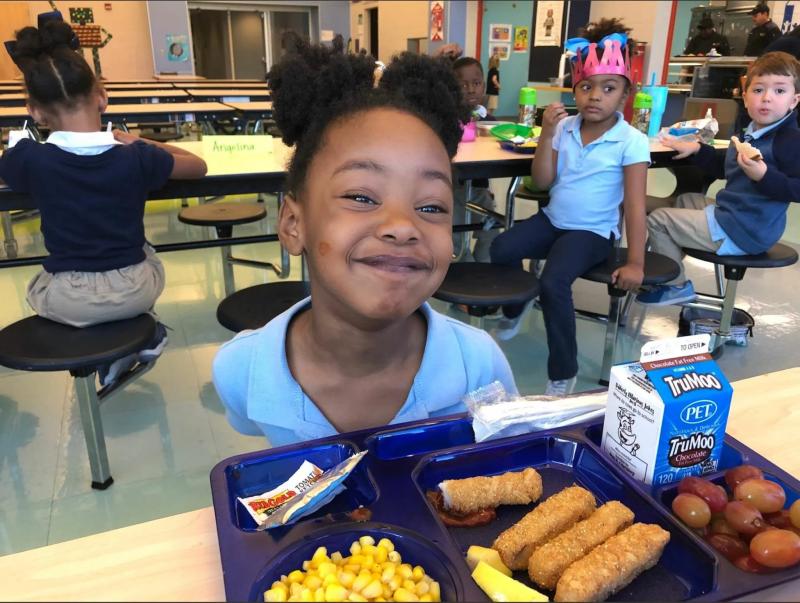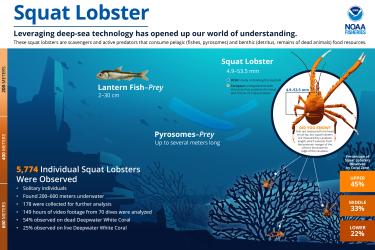At NOAA Fisheries, we know that a thriving, sustainable seafood sector is good for the economy, good for the environment, and good for people who eat seafood. We also recognize that the U.S. seafood industry faces unprecedented challenges from a changing climate, a recent pandemic, and ongoing disruptions to global markets.
We reaffirmed our commitment to improving the resiliency of the U.S. seafood industry with the release of our National Seafood Strategy. The strategy outlines our goals for this effort over the next five years, including fostering access to domestic markets for U.S. seafood. Getting more American seafood into American diets is a win-win solution. Supplying sustainable, nutritious seafood to feed our nation supports the financial viability of our fishing and aquaculture industries.
Partnering Across Federal Agencies
One way to meet the goals of the National Seafood Strategy is by working with federal partners, like the U.S. Department of Agriculture. The Commodity Procurement Program is a long-standing USDA program that provides a valuable avenue to share the bounty of American fisheries around the country.
Since the 1930s, the U.S. Secretary of Agriculture has had the authority to purchase excess agricultural commodities and donate them to Americans in need. These purchases stabilize commodity prices by reducing excess supply in the market. The food donations support critical nutrition programs around the nation that feed children, students, seniors, long-term care residents, and food bank patrons.
While the USDA is traditionally concerned with land-based meat and produce, their purchasing authority can extend to wild-caught seafood as well. That’s where NOAA Fisheries plays a key role. “The USDA relies on our expertise when it comes to seafood,” said Steve Wilson, Director of the Seafood Inspection Program. “Our program provides critical advice in crafting calls for proposals, specifications for acceptable seafood products, and inspection services.”
NOAA Fisheries’ Unique Expertise
Food purchased for these nutrition programs—whether produce, meat, or seafood—must meet several criteria. First, of course, it must be safe. It must also be high quality. Because it will go to feed communities around the country, it must be easily transportable and storable. It should be easy for cafeterias to prepare at scale, and broadly appealing to kids (and adult recipients).
Seafood Inspection Program staff advises the USDA as they craft their solicitations for bids, on everything from the form of the seafood product (a 1-pound can? A 4-ounce, 1-pound, or 2-pound frozen filet?) to the quantities that American seafood companies might be capable of supplying. This specialized expertise that NOAA provides makes the seafood purchases possible.
While the USDA has their own meat and produce inspectors, they rely on NOAA Fisheries to inspect seafood deliveries. NOAA’s seafood inspectors are authorized to grade seafood products and certify the highest quality as “Grade A.” When contractors deliver the seafood products to the specified distribution centers, NOAA inspection staff are on hand to ensure quality and integrity.
Responding to Global Challenges
This partnership between NOAA and USDA facilitates a program that has real benefits for American fisheries. In recent years, the Biden-Harris Administration has encouraged the use of the Commodity Procurement Program to support the seafood industry through difficult times.
“U.S. fisheries and the American seafood industry were dealt a heavy blow,” Secretary of Agriculture Tom Vilsack explained in May of 2021, at the height of the COVID-19 pandemic. As part of the pandemic response, USDA announced “the largest single seafood purchase in the Department’s history.” That initiative included more than $70 million for pollock, shrimp, whiting, rockfish, and salmon products—and it marked the beginning of an ongoing strategy.
Since then, these seafood purchases have continued and expanded. This past July, USDA awarded contracts totalling more than $118 million for frozen pollock, haddock, rockfish, whiting, and salmon filets, packaged salad shrimp, and canned sockeye salmon.
Building on Success
Looking forward, we see opportunities to build on this momentum. Our Seafood Inspection Program and USDA are working with the seafood industry to move toward more Grade A-certified seafood that would be eligible for commodities purchasing for food and nutrition programs. Ultimately, more Grade A certifications are better for industry and for consumers.
NOAA is also working closely with U.S. stakeholders to expand the list of species and seafood products that qualify for the Commodity Procurement Program.
”Because these nutrition programs provide the seafood at no cost to students and communities in need,” Wilson said, “they increase the equity of access to healthy domestic seafood. In the long term, this creates and expands the market for domestic seafood, bolstering the sustainability of the industry.” And that’s a win for everyone.


